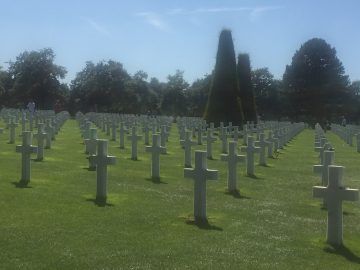by Leanne Ogasawara
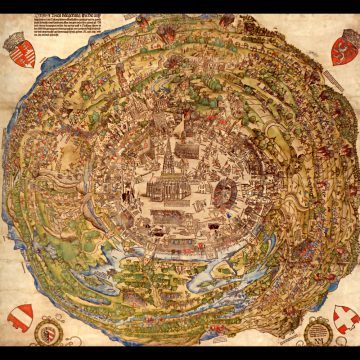
1.
The year was 1683. And the Grand Vizier of the Ottoman Empire, Kara Mustafa Pasha, was leading one of the most organized war machines the world had ever seen, westward– toward Vienna. We know that his campaign would end in failure. The Pasha himself held ultimately responsible, he would be made to suffer the punishment of death by strangulation. The skin of his head peeled off and stuffed with straw, this gruesome “head” was then delivered to the Sultan back in Constantinople in a velvet bag.
Make sure you tie the knot right, he reportedly said with great bravado to his executioners as they prepared to tie the silken cord around his neck.
Only imagine how optimistic he must have been months earlier as he led his powerful army toward the city known to the Ottomans as the “Golden Apple.” Before the battle, Kara Mustafa had sent an official demand for surrender of the city. It was pure formality– as both sides knew this was to be a fight to the finish.
The Ottomans, for their part, had already set up camp and began digging.
Digging?
The walls of Vienna were famous back then. Built during the 13th century using ransom money from the high-profile kidnapping of King Richard the Lionhearted (who had made the mistake of getting captured near Vienna whilst traveling home from the Holy Land), these walls had proved an impossible challenge the last time the Ottomans had come to town, in 1529. That was under Suleiman the Magnificent. And it wasn’t just the walls that challenged the invading army; for surrounding the walls were massive fortifications –including projecting bastions, ravelins, and ramparts. The entire city was then further fortified by wide artificial slopes (the glacis). That is why the best chance the Ottomans had was to dig under the bastions and detonate explosives to bring the fortifications down.
Can you imagine the terror of being inside a besieged city with the enemy tunneling underneath to gain entry? There are (probably dubious) reports of the citizens being able to hear the pick axes from the floors underneath their feet.
Not surprising to anyone, the Habsburg Emperor Leopold had long left the city — taking with him all the aristocrats. Typical, right? The city had been left in the hands of Austrian Count Starhemberg’s mere 15,000 men. The Ottoman army was ten times that number! So needless to say, things did not look good for Vienna! In the days leading up to the battle, the Habsburg’s had desperately tried to cobble together another Holy League (one like that seen at the Battle of Lepanto), but despite the Pope’s best efforts on the behalf of the Habsburgs, the allies were not at all convinced in the righteousness of Leopold’s cause. In addition to the Austrians under Starhemberg, the Duke of Lorraine was leading an army of about 20,000 men. These men were not on site however, and were holding back in hope of reinforcements in the form of the great Polish king Jan Sobieski.
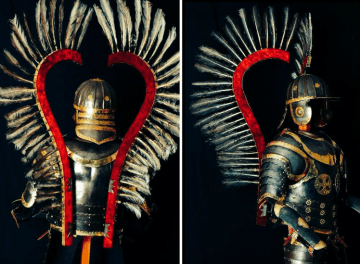 2. Now, to sing the praises of the glorious Polish King Sobieski!
2. Now, to sing the praises of the glorious Polish King Sobieski!
Being severely outnumbered, everyone on the Habsburg side knew it all came down to the Polish king arriving in time (and King Sobieski was notoriously slow). The siege was vicious and food had been cut off, but the extra fortifications slapped together in the weeks prior to the arrival of the Ottoman army significantly slowed their adversaries down; giving the Polish cavalry more time to arrive. And what a cavalry they were! In what has been called the greatest charge in history, many people claim the Polish-led campaign to be the battle that would inspire JRR Tolkien’s “The Ride of the Rohirrim.” (Video).
If you haven’t heard of Jan Sobieski, you must not be Polish (or Austrian). And you are really missing out since the Polish king is one of history’s greatest baddasses! In Poland, kings were elected—not merely born—and Sobieski was a decorated hero. He was old, but he knew what he was doing and came up with the winning plan. His forces would meet up with the Duke of Lorraine and position themselves on Kahlenberg hill outside the walls of the city. The charge (which he would lead) would be unexpected to the Turkish army, since few battles were fought from forested hills. In fact, it was extremely challenging to get the cavalry with their horses and guns and few cannons up that steep and heavily wooded slope. But Sobieski had in mind a surprise attack. Doing this on horseback seemed impossible but the great Polish king insisted. And since he was the only one with a plan– not to mention a large contingent of soldiers– he could call the shots.
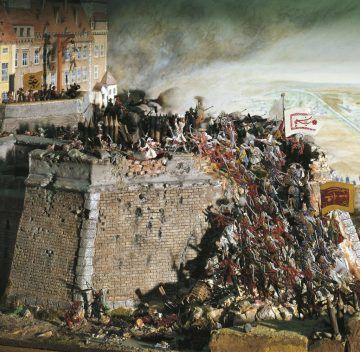 And did I mention he had brought with him the legendary Polish Winged Hussars?
And did I mention he had brought with him the legendary Polish Winged Hussars?
In the words of the Badass of the Week blog, they were “one of the most eye-skeweringly hardcore associations of asskickers ever assembled.” That about sums it up, I’d say. Like some kind of throwback to medieval knights, they did battle on horseback wearing heavy plate armor and chain mail and carrying 16 foot long lances (!) And not just that, but they were outfitted with leopard skins and plumed helmets and rode with great wings. Made of wood and mounted to their saddles, the wooden wings were usually adorned with ostrich feathers.
Why would any soldiers want to fight with something so unwieldy like that?
Well, apparently the wings made a loud clattering sound when they rode into battle and this scared the hell out of their opponents.
An elite shock force, the king led them at a full gallop down that hill to scatter the Ottoman forces at the bottom.
After their triumph, Sobieski was said to have paraphrased Julius Caesar’s famous quote: “Venimus, Vidimus, Deus vincit” – “We came, We saw, God won.”
Of course, the battle (which took place on the 12th of September –not on 9/11 as some European nationalists insist) had a strong religious component to it. Catholics were praying for the triumph of the Habsburgs as far away as the Netherlands and Great Britain. Kara Mustafa also traveled with clerics to counsel his men. Nevertheless, it was not that simple. On one side, there was the highly organized Ottoman army, outnumbering the Habsburg army ten to one. While on the other were the Habsburgs, who were desperately trying to cobble together another Holy League like they had managed for Lepanto. But was this really a monolithic battle of religions or cultures?
Not at all, for which side were the French on? Yes, the “most Catholic monarch” (also known as the “most Christian Turk!”) was rooting for the Ottomans! And Protestant communities as well were divided–some fighting with the Ottomans (notably Hungarian prince Thököly) and some with the Habsburgs. Sobieski, along with his winged hussars, had a troop of Sunni Tartars fighting at his side. (Apparently, they wore straw in their helmets to better distinguish themselves from the Tartars on the Ottoman side). In other words, it was a mixed bag, with two huge empires employing any means and allies available. How far west would the Ottoman empire spread? How far east could the Habsburgs control?
And perhaps most mind-boggling of all, each believed themselves to be the rightful heir of the long-gone Roman empire!
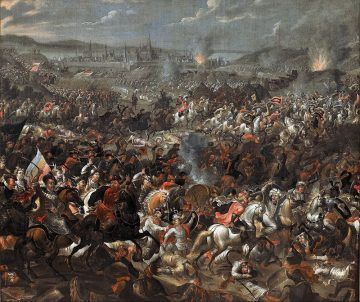 3.
3.
Do you have a favorite battle?
Strange question, I know.
But in the old days, some people–I suppose, mainly men– were interested in military history and liked to talk about and read about the great battles. My father, for example, was a huge WWII buff and was deeply interested in military history–especially anything to do with General Douglas MacArthur. Even today, Gettysburg and Normandy draw thousands to pay respect for the fallen. Though it was not “my war” I was surprisingly moved by Normandy. My son, in contrast, didn’t know what to think. More than WWII, the war of my childhood was Vietnam. And when I traveled there in the mid-90s, I had a visceral reaction. From seeing American vets in the hotel lobby in Saigon, where so many of them seemed to be utterly shellshocked all these years later, to the emotional conversations I had with the Vietnamese people I met in Hue, I had a lump in my throat the entire three weeks I was there. I was moved precisely because I had grown up KNOWING in what sad way our countries had come to share a history.
That America was at war was impossible to ignore at the time.
But nowadays, the conflicts we are involved in–yes, the wars– are almost invisible in terms of our daily lives. My husband has little interest in military history and my son would find the very thought of someone being interested in war as utterly bizarre! But does that mean we have progressed? The battles of today are also being sold as existential clashes of civilizations–just like the battle of Vienna. But do our children even recognize that we are at war? Do they (and their parents) clearly recognize the costs of winning or losing, and the costs for the young soldiers who continue to sign up out of patriotism or out of necessity? One of Obama’s first acts as President was to authorize a drone strike. Under his two terms as president, the use of drones, which began as something debated in terms of international law and Just war Theory, became fully normalized.
And now under Trump, drone use is being expanded with oversight being cast aside.
It was good that Obama lifted George Bush’s 2003 ban on photographing military coffins. And yet, the media seems uninterested. And as we “evolve” to drones and a military alienated from civilian society, the costs grow less acute and our personal engagement diminishes further.
Nassim Nicholas Taleb would say we no longer have skin in the game.
My dad, who enlisted and is buried in a national cemetery– used to say, any politician voting for war must first enlist one of their own loved ones.
Yeah, right.
Even Memorial Day is just a day of BBQs, right?
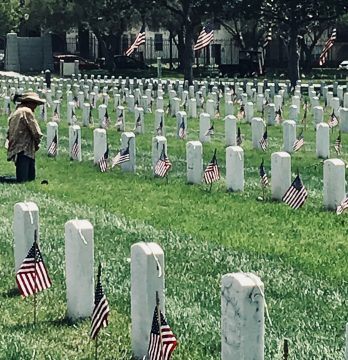 4.
4.
Last year, I took a taxi up to Kahlenberg. From the top of the hill, Vienna looks small in the distance. I could imagine how vulnerable it must have looked that day when Sobieski stood at that very spot before his legendary charge down the mountain. There is hardly a trace of him now–except for a monument and a small plaque that adorns the church, where the king was said to have celebrated mass with his men before getting on their horses to fight.
The Battle of Vienna was an enormous defeat for the Ottomans. Never truly recovering, the battle became a turning point, which saw the gradual decrease of their empire. The battle was also devastating for the Hapbsburgs, who saw an equal number of dead. This was not an invisible battle –and indeed it continues to be significant in our historical memory even today: for example, the issue of Turkey’s inclusion in the EU has a different emotive impact in Vienna than say in Britain. And in America, it is hardly on our intellectual radar at all. Even in American, though, some may recall the former Commissioner of the EU Fritz Bolkestein declaring that, “If Turkey joins EU then the liberation of Vienna in 1683 would have been in vain.” More devastating was Norwegian madmen Anders Breivik, who carried out a far right-wing terrorist attack in which he killed 77 people in 2011. Calling himself an anti-jihadist, he cited the “9/11 of Vienna” as one of his reasons and was known to have been inspired in part by the inflammatory blog, the Gates of Vienna (not including link). No matter how these battles are manipulated to make a violent and political point in today’s world, back at the time of the battle itself, everyone’s survival and the fate of their families and cities – as well as nations – were on the line. Whereas today, our wars are less impactful to us than video games
**
Here’s How the 2020 Candidates Stack Up on War and Peace
Australian TV’ series Secret City Under the Eagle explored the costs of using drones –and made some US conservatives angry for portraying “portrayed Americans as “lying to their allies, droning their friends, and not caring if innocent people are hurt or killed in the process.”
Five part series in NYTs called War and the City, by Roy Scranton
Books:
Enemy at the Gate, by Andrew Wheatcroft
Polish Winged Hussar 1576–1775
by Richard Brzezinski
Drawing of the Dark–strange fantasy novel about the first Siege of Vienna, by Tim Powers
Also on the first Siege: Four Princes: Henry VIII, Francis I, Charles V, Suleiman the Magnificent and the Obsessions that Forged Modern Europe
by John Julius Norwich
Spell of the Vienna Woods, by Paul Hofmann
